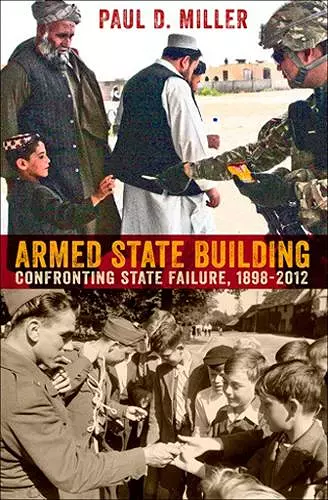Armed State Building
Confronting State Failure, 1898–2012
Format:Hardback
Publisher:Cornell University Press
Published:15th Aug '13
Currently unavailable, and unfortunately no date known when it will be back

Since 1898, the United States and the United Nations have deployed military force more than three dozen times in attempts to rebuild failed states. Currently there are more state-building campaigns in progress than at any time in the past century—including Afghanistan, Bosnia, Kosovo, the Democratic Republic of Congo, Haiti, Sudan, Liberia, Cote d'Ivoire, and Lebanon—and the number of candidate nations for such campaigns in the future is substantial. Even with a broad definition of success, earlier campaigns failed more than half the time. In this book, Paul D. Miller brings his decade in the U.S. military, intelligence community, and policy worlds to bear on the question of what causes armed, international state-building campaigns by liberal powers to succeed or fail.
The United States successfully rebuilt the West German and Japanese states after World War II but failed to build a functioning state in South Vietnam. After the Cold War the United Nations oversaw relatively successful campaigns to restore order, hold elections, and organize post-conflict reconstruction in Mozambique, Namibia, Nicaragua, and elsewhere, but those successes were overshadowed by catastrophes in Angola, Liberia, and Somalia. The recent effort in Iraq and the ongoing one in Afghanistan—where Miller had firsthand military, intelligence, and policymaking experience—are yielding mixed results, despite the high levels of resources dedicated and the long duration of the missions there. Miller outlines different types of state failure, analyzes various levels of intervention that liberal states have tried in the state-building process, and distinguishes among the various failures and successes those efforts have provoked.
In recognizing the complex nature of the subject matter, the author does a commendable job in advancing the body of knowledge in a meaningful way. His efforts certainly enhance the ongoing debate on how to best address conflict and post-conflict state building. Of special note, in appendix A of the book, Miller does an exceptional job in summarizing all United Nations- and U.S.-led state building interventions since 1898. This appendix alone is of value to a wide array of readers. As a complete body of work, this book is best read by conflict theory scholars, military and interagency professionals, international relations/affairs scholars and practicioners, developmental economists, and military historians.
- Dr. David A. Anderson (Lt. Col., U.S. Marine Corps, retired) and William E. Odom (Military Review)In this excellent study, Miller brings to bear scholarly rigor and his recent experience as the U.S. National Security Council's director for Afghanistan and Pakistan to assess U.S. and UN efforts to rebuild failed states through armed intervention. Drawing on evidence from such missions in Germany after World War II and more recent attempts in Nicaragua, Liberia, Sierra Leone, Afghanistan, and elsewhere, Miller argues there is no master strategy that will work in all instances.... His book displays an admirable clarity in its evidence and analysis, although it is worth wondering whether powerful Western states can reliably behave as carefully as Miller advises.
- G. John Ikenberry (Foreign AffaISBN: 9780801451492
Dimensions: 235mm x 155mm x 22mm
Weight: 907g
264 pages